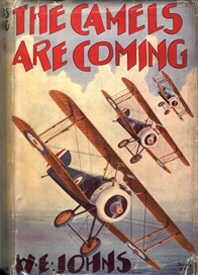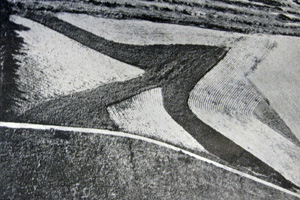On the night of 16 February 1873, the Russian ironclad Kaskowiski slipped into Waitemata Harbour, off Auckland, the largest city in the British colony of New Zealand. She found a British warship at anchor, and sent a ‘submarine pinnace’ to disable its crew by means of a ‘mephitic water-gas’ so that their ship could be taken. Having done this, the guns of both ships were trained on the city. The Russian captain began to land his marines on shore, with orders to occupy the armoury and all telegraph stations within 40 miles, as well the banks at Grahamstown, which serviced the nearby goldfields. The Russians began rounding up prominent citizens and colonial officials, holding them at gunpoint in the Provincial Council Chamber. Vice-Admiral Herodskoff demanded from them a ransom of £250,000, or else he would give orders to burn Auckland to the ground. Eventually, a bit over half that sum was handed over. The Kaskowiski sailed away, leaving the provincial capital under the guns of the captured ship. The Daily Southern Cross, which reported this shocking news the morning after, was in despair: ‘WHERE IS THE BRITISH NAVY?’ But the British had problems of their own, for (unknown to the remote colony) war with Russia had already broken out over central Asia and Persia …
Of course, this never happened. It was a hoax, perpetrated by the editor of the Southern Cross, David Luckie. His aim was to draw attention to Auckland’s complete lack of defences, Battle of Dorking-style. But the effects were more War of the Worlds. Despite the clues (“Cask of whisky” and a supposed publication date three months in the future), some people prepared to flee the city, saddling horses and prying their gold from under the floorboards. Pupils skipped school (not that they needed much of an excuse, surely) to look out for the Kaskowisky, while others kept a suspicious eye on the British warship in the harbour. With crowds besieging his newspaper, he wrote a follow-up explaining what, in his opinion, needed to be done to guard against privateers and Russians: a chain of fortifications built to protect Auckland, armed with torpedoes, and a strong Royal Navy squadron for the Australian station.
The idea of a Russian attack on New Zealand wasn’t quite as silly as it might sound today. In 1865, a Confederate warship, Shenandoah, had visited Melbourne en route to plundering the American whalers off Alaska, so there was a precedent for privateering. The Great Game between Britain and Russia did indeed have the potential to turn into a Great War, and was causing concern in New Zealand as early as 1855. News of tension between the two empires led to war fever in early 1871, and in April that year, a Russian clipper called the Gaidamak had left Melbourne, and was last seen heading west for New Zealand … maybe it was scouting out sheltered harbours for use in wartime? (It wasn’t the first or the last Russian ship to visit Australia either.) The Australian colonies were starting to provide for their own defence — Victoria’s powerful monitor Cerberus arrived in the colony in 1871 — so why shouldn’t New Zealand do the same? It was so remote from mother England, after all, a long way for help to come.
But not much was accomplished. Some work was started on coastal defences in 1877; in 1885, there was another Russian scare, another hoax, and a number of forts were constructed. By 1909, the Russians had been replaced in the New Zealand imagination by Germans, and the commerce raiders were supplemented by airships. Finally, in the Second World War, some Germans and Japanese submarines did come to New Zealand, but didn’t actually do much. And there my knowledge of New Zealand’s defence panics ends, but I doubt there was anything else as curious as the Kaskowiski affair …
Sources: Glynn Barratt, Russophobia in New Zealand 1838-1908 (Palmerston North: Dunmore Press, 1981), 48-53. Impressively, all of the Southern Cross has been scanned and is freely available online: the relevant articles would seem to be this, this, this, and this.
![]() This work is licensed under a Creative Commons Attribution-NonCommercial-NoDerivatives 4.0 International License.
Permissions beyond the scope of this license may be available at http://airminded.org/copyright/.
This work is licensed under a Creative Commons Attribution-NonCommercial-NoDerivatives 4.0 International License.
Permissions beyond the scope of this license may be available at http://airminded.org/copyright/.





Cool post.
There was some German raider activity in WWI.
http://www.navymuseum.mil.nz/history/time/ww1/german-raiders.htm
The NZ Official Histories of WWII have been transcribed, and are available at
http://www.nzetc.org/tm/scholarly/tei-corpus-WH2.html
It’s always nice to read these pearls in your digital journal!
Thanks, Errol and Ricardo. I didn’t know about the WWI raiders — I’m always amazed at how far and wide they roamed!
Pingback: An awful day in history